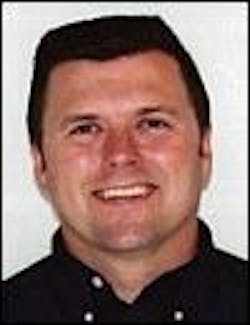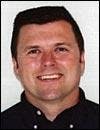Profile: Project manager recalls NYC installations following Sept. 11
The following in terview with Brett Smith is part of an occasional series of profiles on players in the cabling installation and maintenance industry. Smith was a project manager for Forest Electric (New York) when terrorists struck the World Trade Center in New York City on Sept. 11, 2001. He worked relentlessly after the tragedy to help restore telecommunications service to many companies. Smith will tell his story at the BICSI 2002 Fall Conference in New Orleans this month.
Q. Describe your installation work following Sept.11.
Project Manager
Forest Electric
Q. What do you see as the initial effects on the cabling industry in the post- Sept. 11 environment?
Smith: "Immediately following, I saw great signs of the industry doing its part as a whole, to help in any way they could. Contractors were giving supplies to each other. They were giving up manpower so men could temporarily go to work on emergency projects. Distributors were asking clients if they could put their orders on hold so that supplies could be sent to the New York area. I know of one major hotel chain that agreed to have its project put on hold so that crews could be pulled off. And as for the end users, I think they're finally listening to that one guy in the meeting who was always saying, 'What about an emergency plan?'"Q. Are companies now putting more of an emphasis on security and backup systems?
Smith: "Absolutely. September 11 didn't just catch us off guard-it hit us from a direction no one was expecting. If you think back to Y2K and all of its problems, no one was thinking, 'What if the building isn't here tomorrow?' Companies are now taking a long, hard look at exactly what they have to lose. For the first time, companies are thinking about redundant backbones and redundant pathways-and not just storing backups off site but, in some cases, building extra workstations in other locations and then mothballing them."Q. Are companies taking the necessary steps to upgrade their systems in this environment, or are many still cautious about spending money?
Smith: "I would say that those who where affected by Sept. 11 are taking amazing steps to make sure that they are not hurt like this again. But as an industry as a whole, I would have to say that companies are letting the economy make their decisions for them. There are a lot of people out of work in the telecommunications field, and that shouldn't be the case."Q. Describe your thoughts on the passing of Division 17. Why is it advantageous, in the post-Sept. 11 landscape, for installers to be in on the design process of a new building?
Smith: "Too often, when people in our field come on to a construction site, no one knows us because our needs were never discussed in the planning stage. Any questions or concerns about design are too often answered by someone who knows nothing of bend radius of fiber, or the distance limitations of copper. Getting the pathway designer into the meetings before the plans are ever drawn up will not only make the project run smoother, but if security, or disaster recovery is a concern for the customer, then someone with good training and practical knowledge can offer solutions that can ensure that the needs of the customer are met."Correction
Our June issue ("Low-loss connectivity for multimode applications," page 38) listed the incorrect Web address for Sumitomo Electric Lightwave. Readers interested in the company's fusion-splicing technology should visit www.sumitomoelectric.com
null

